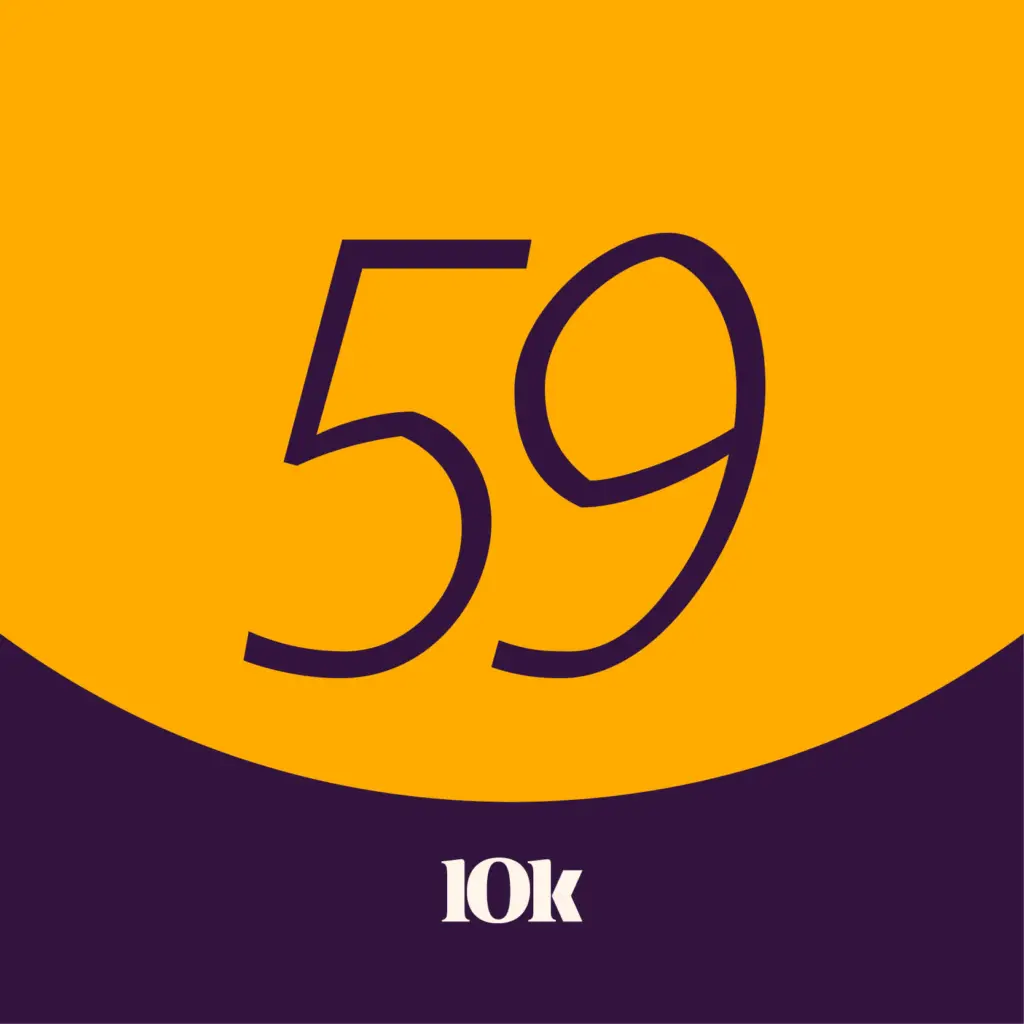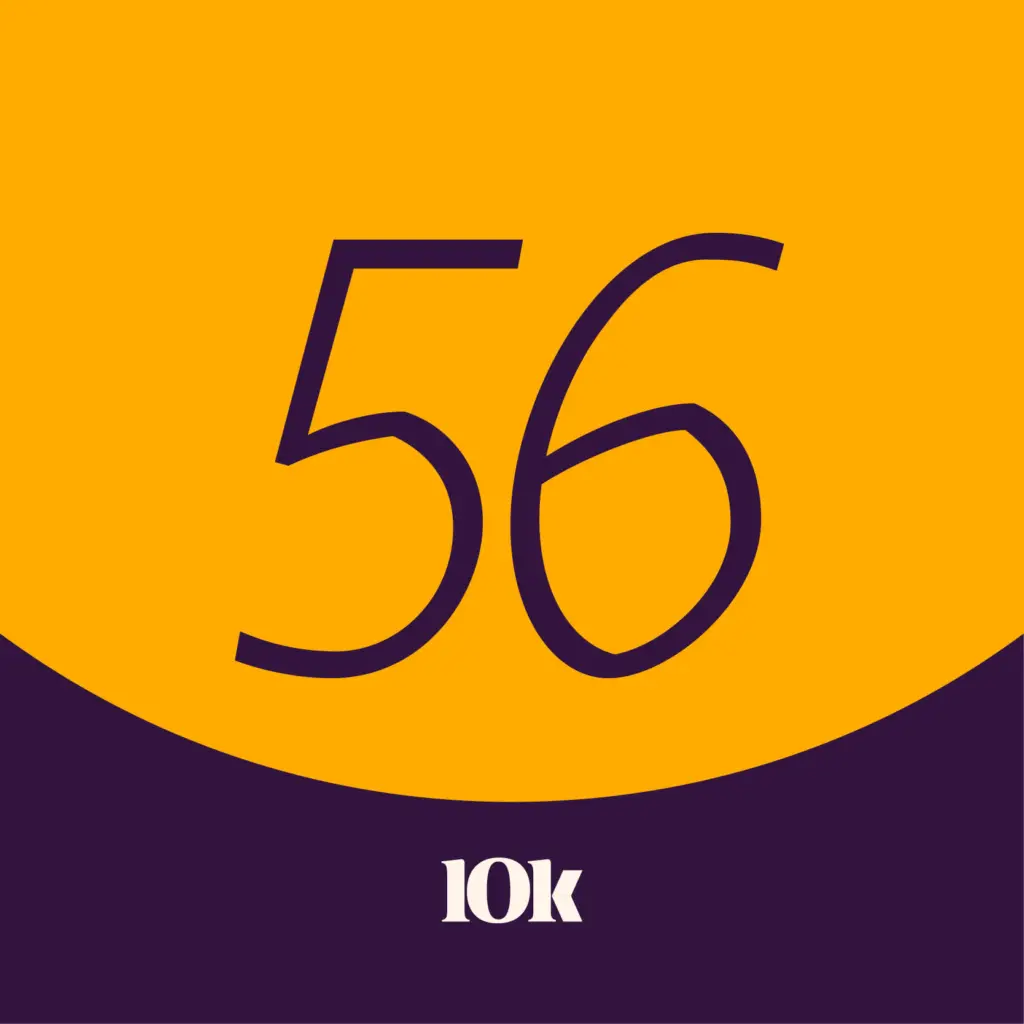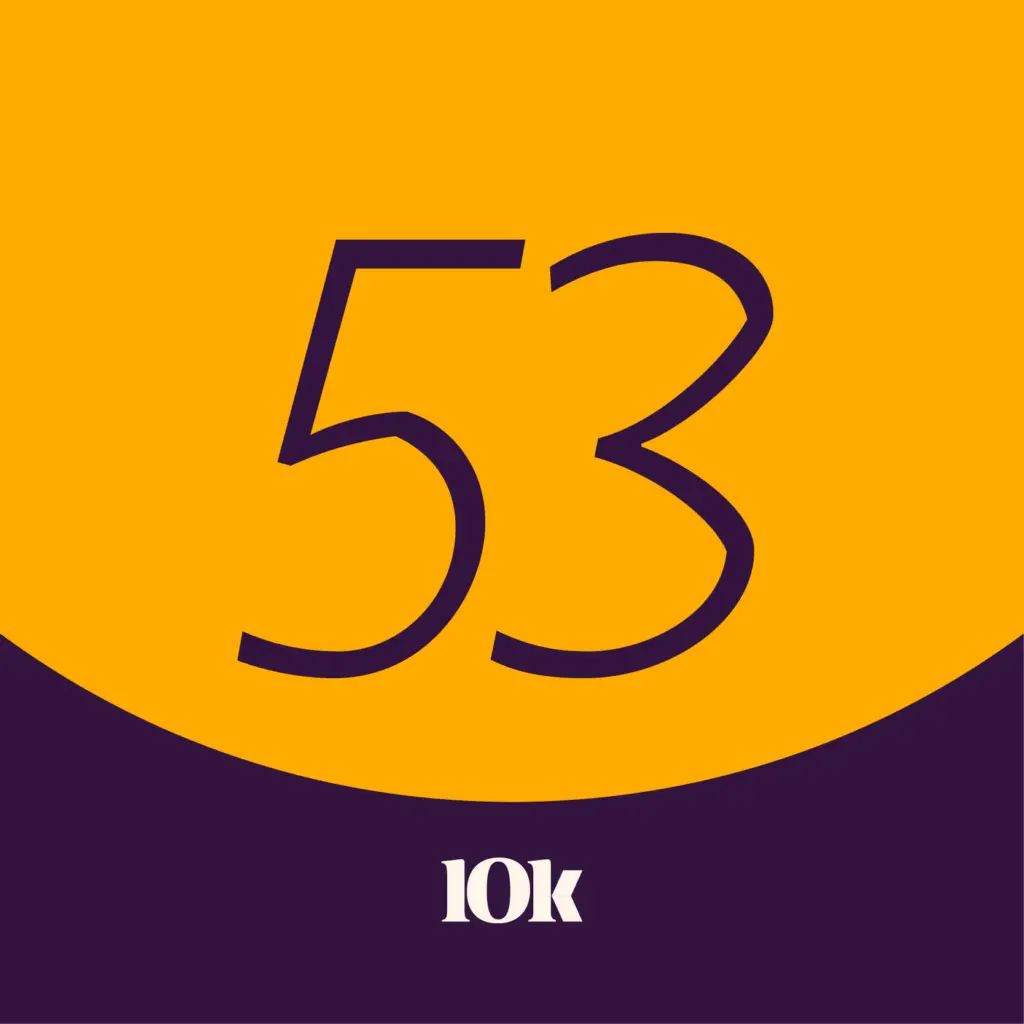We talk to CIO and co-founder Jim VanderMey and Principal Sales Consultant Lisa Helminiak about the ins and outs of Intranet vs. DEEP. What’s DEEP? It’s a “digital employee experience platform.” If you haven’t heard the term DEEP before in this context, hit play! We’ll define it, provide practical applications for your own business and have some fun along the way.
Enjoy the episode!
This podcast content was created prior to our rebrand and may contain references to our previous name (OST) and brand elements. Although our brand has changed, the information shared continues to be relevant and valuable.
Episode Transcript
Kiran Patel: Hello, Welcome to Ten Thousand Feet: The OST podcast. I’m excited to be here today with OST CIO and Co-founder Jim VanderMey and with Lisa Helminiak, a principal consultant at OST. Lisa and Jim are here with me today to go beyond Internet for this conversation, and we’re gonna go DEEP. We’re gonna define these terms, talk about what once was prevalent, and what is now happening, and just have some fun with this topic along the way.
So Lisa, welcome to the show.
Lisa Helminiak: Thanks so much, Kiran. I’m so excited to be here.
View Full Transcript
Kiran: And Jim, glad to have you on today.
Jim VanderMey: Thanks, Kiran.
Kiran: Excellent. Let’s get started. We were noodling over this topic. And Lisa, you mentioned this term that you’re now championing and we’re hearing a little bit more, and that’s DEEP. What is DEEP? What does it stand for? What is this all about?
Lisa: I think it was a term that came out of a conversation and we didn’t realize that we had created an acronym that just actually worked. So it’s a proposed way of looking at the new world of employee experience and how digital tools and digital experiences can improve that experience.
I think in the old days we thought of the internal employee experiences, you know, in terms of the digital space was focused on setting up the right intranet, right? It was a tools play. It was, you know, what can we build up our data and information architecture on? So it was either people cobbled together, you know, different employee websites, or they would have, you know, different toolsets that people use to different, do different things.
And now we’re trying to look at it as a bigger, more cohesive ecosystem. And so DEEP is really looking at it from that experience first. And I would say that experience planning, that architecture, and I mean really the experience part of it could be digital, part of it could be, you know, supported by, you know, person-to-person training.
It’s really looking at that full ecosystem. And then how do we craft and pull together a digital system to support what we’re trying to design.
Kiran: And you’ve established what DEEP is and we know also what it’s not. So can you tell us a little bit of the history of what these kind of platforms have looked like in the past and why that started to evolve to what it looks like today?
Lisa: And I think Jim can talk about this too, but I do think in the past it was, you know, digital allows us to tie things together so that, you know, bigger companies can connect people, right? There’s lots of things an intranet or an ecosystem of technology needs to do for companies. You know, there’s talent management, there’s HR operations, there’s, you know, compensation and benefits, there’s geographic worker issues. You know, there’s a lot of things. These are complex ecosystems. And in the old days, you know, people didn’t have anything, right? They were doing it with paper and, you know, phone calls, faxes. Now, you know, technology came in to allow people to start pulling it together.
So we had SharePoint, we have, you know, other systems that have come together over the years. I do think we’re at the end of that era. That, you know, to keep people at organizations to differentiate your organization based on your employee experience. We can’t just buy off-the-shelf software anymore. We need to look at it.
What’s your differentiation? How do you retain employees? How, you know, what we’re seeing in this, you know, employee leaving this, you know, time that people were quitting. People are starting to bounce back again. How do you create an alumni network for your company? So there’s lots to think through. There’s also lots of tools on the market now that do bits and pieces of this.
You know, Salesforce, Workday, Microsoft and AWS have these tools that tie into this too. So one tool is not going to be your savior in terms of creating the right experience for employees. So our proposition is we start first with that experience design, and then we look at the technology architecture to support that.
Jim: And I think that’s actually one of the critical pieces is because historically, enterprise, IT has tried to buy their way into a space of solving human problems or business problems. And that approach and the application of what I’ll call an ERP mindset or enterprise systems mindset creates a transactionalization of the employee experience and because we’ve got have so many different repositories and so many different places where that information is now stored using the technologies of the internet. And I think this is an important distinction as when we talk about intranet, that term was developed around the large scale adoption of Internet based technologies from the worldwide web at the time, and applying them towards an internal information repository approach so that I could search and find content similar to what I could do in the Internet, and that allowed for and in fact perpetuated the system where you have a highly diverse set of products and services, which employees were then responsible to navigate. Just like they had to navigate the Internet. They had to now navigate the intranet and the digital employee experience platform is intended to focus on the experience of the employee as opposed to a technology platform that is being used to deliver information in a self-service model for employees.
Kiran: So that’s a lot different than what it once was. Jim, could you expand a little bit on this idea of putting employees first and the technology second, and how that shift in evolution has come to.
Jim: Well, I think that that the way you’ll see that behavior manifested is if you go into an organization and they’re talking about buying a tool to implement, and then they’re talking about the experience secondary. They’ve subordinated the experience to the limitations of the architecture of the technology, versus talking about what do we want the employee experience to be, and then implementing technologies and platforms to support that experience. The question is, what is being subordinated to what? Is it architecture being subordinated to experience, or is it experience being subordinated to architecture? And I know Lisa has a point of view on that topic.
Lisa: Well, I don’t think experience leading tech is new. In fact, I love this quote from Steve Jobs in 1997 and he was talking about this was, you know, when he was coming back into Apple and really changing things up. He said, “You’ve got to start with the customer experience and work backwards to the technology.” You can’t start with the technology then try to figure out where you’re going to sell it. I’ve made this mistake more than anyone else in this room. So that was his call to action when he came back in Apple. So this is not new thinking. I think it’s just new thinking applied to our internal systems, our employees, and, and it’s come to a four because of the tight job market.
But I don’t think that’s gonna change. And I do think companies understand that they’re going to become the companies people wanna work for. Because they have the right tools to help people do their jobs. In fact, I have, a stat here. This comes out of an HBR article, Harvard Business Review, “In the hybrid world, your tech defines employee experience”, by Brad Anderson and Seth Patton, and the quote is, “Employees are 230% more engaged and 85% more likely to stay beyond three years if they’re in their jobs, if they feel they have the technology that supports them at work.” And that is data that’s coming out of Qualtrics. So I think that’s super, that’s very interesting.
I think we’re really starting to focus on how do we support people? How do we empower them? We know employees who feel empowered and can take action tend to be more engaged in their, their work and you know, tend to stay. So that’s what we want. We don’t want technology to slow people down. We don’t have that luxury anymore. Competition is getting harder, faster, quicker. We need to be thinking about how we do our work inside now, not just how we engage our customers.
Kiran: Lisa, could you take me through the process a little bit of creating such an experience? So your background is in understanding this very thing with service design and experience design. When an entity is looking to create an experience that puts employees first, what does that look like? What are some, some signs or signals that they’re off to a good start in, in creating this ideal experience?
Lisa: Yeah, that’s a great question. I mean, I think we follow the tenants of human center design at OST. And one of the places we start is with the business stakeholders. You know, we sit down with them, what do they think is going to help them get to the strategy they need to get to in terms of the business? We start there, you know, what are their suppositions, what are their, what information do they have?
What data have they gathered? Have they done research? And so we sit down and look at that and understand it very carefully. We also want to test those assumptions, right? So we do, we go out into the field and actually look at how people are actually doing their jobs. So we might go to a call center, we might go to the finance department.
We may go to, you know, different parts of the organization and do some observational and qualitative work to actually look at what’s happening, what types of things is not coming out in surveys or other work that, that companies are doing to try to understand the ecosystem that is happening in their organizations.
So we then look at those and we cross-reference it and we sit down and we look at where the opportunities both from the business side and then to delight people or make their jobs easier. So, you know, we’re always looking at the same things. You know, adaptive organizations, people-focused organizations, intelligent organizations and automated organizations, how do we, you know, make self-service and those types of things? How do we make things more efficient? So we’re looking at it from all those lenses, and once we do that, we can start mapping that. So it’s often we’ll do a journey map of the existing situation so we can see what’s working, what’s not working.
We take all that data and make it in a visual format, in a storytelling format so people can get their heads wrapped around it. We also work together on that. So it’s, you know, a process of a discovery that we do with the clients. Then we look at it and say, what do we want this to be? And we use different tools such as service blueprinting and stakeholder mapping to understand who influences who and how can we craft that front stage, meaning what your employees are experiencing with the backstage?
How are you supporting it with tools and technology to make things work better? So we actually can document that with the work that we do. So it’s clear, again, it’s not haphazard. We actually can craft the experience we want to have. We can even do prototype testing with that, just like we would do in product testing for digital products. We can actually do prototype testing even in non-digital ways. So all of these things add up to we are crafting the best experience we can, and making sure it works before we spend lots and lots of time and money building something. So, that would be a standard process, whether we’re doing products or services, but we’re do, we’re bringing that to the employee experience now, which is, I think newer. This is, this is.. people are willing to invest in this now.
Jim: I actually want to go back though to your question, Kiran, because you had embedded something in your question that I think has to, has to be argued against because you said the ideal experience and we have to recognize that there’s that if you think about it in your workplace, how often do you have ideal experiences?
We call it work for a reason. And so part of that journey map that Lisa just described is how we also define the unhappy path. That when you need something as an employee, how do I find it or when there is friction. And so what we’re looking at in this journey mapping and this and this, some of these definitional activities is to recognize where are the points of friction for employees.
Because just because you have access to all of the information that you could conceivably want, and it’s found, it doesn’t mean that it’s friction-free. And we’re in a new world where people expect their technology to be intuitive and self-describing and at the time of need that it’s, and I’m, I’m an old guy, so I remember the time of having the employee handbook that you received on your first day of employment and then you had to read it all.
You had to sign a paper, which was given to HR, and that indicated that you had fully consumed the content and the employee handbook. And most of that content was not relevant to me at the, on my first day on the job. And so you had to remember when an event occurred, like, what is the time-off policy, or what is the situation when I have to take a sick day?
Or what’s the situation for employee reviews? And it was not self-revealing. And so how do we create technology that supports the employee experience through the life cycle of an employee from the first stage of contact that’s through the talent acquisition process, to the onboarding of that person through their development as a human in a company, to when they decide to leave or retire? And I think that you think about that, that employee journey as a complete process that includes happy and unhappy moments and how we support people on that is a, is really the heart of what we’re talking about here, not creating an ideal experience that is the singular path upon which everyone’s going to trod.
Kiran: I think it’s fair to say that the expectation that people have of engaging with these platforms has changed because I think individuals crave ease and that is something that comes to mind. I received a handbook when I started here and I had the handbook at my desk at the office and I was at home and I wanted to know what the maternity leave policy was.
So I sent a message to one of our talent acquisition specialists who then found a copy of the handbook electronically and sent it to me so I could get access to that. And I do specifically recall that I knew where it was in the book and I wanted to flip to it, but I couldn’t. So I do think people have begun to ask more and desire ease when they do want information and they want it when they want it.
Jim: Well, it’s when life happens and it’s how does our life happen in the context of work? And it’s, and then designing tools to support that. And that’s why the, what Lisa was describing, and this is one of the core principles of how OST approaches these problem spaces is designing for the experience, thinking about the journey, and then how we support those very human endeavors with the technology.
Lisa: I wanna add to, I just think back to the old days of the intranet too, and I’ve worked on a number of them over the years. And the old way was to create, I just call them Link Farms, you know, where it’s just a web page with, you know, 50 links to different things on it. It makes the employee do a lot of work, right?
It makes you search and try to find things again, Kiran, it’s a little bit about what you were just saying and, and now we can be smarter than that, you know, we, I love the story of one of our clients who has pet insurance for their employees. And, you know, the conversation I had with the HR person was, we want people to know, you know, when something happens to their pet that they, we’re here for them.
We want, we want them, we wanna be proactive. We want to let them know. And so it’s really, you know, showing care, I think for people rather than, you know, forcing people to go in search of the information they need. How do we get information into people’s hands when they need it? Jim was right on. It’s like the events happen and most of the time when you’re, you know, working with HR when something happens, you know, it’s, it’s often a stressful situation or it could be, you know, a wonderful situation, but you’re planning, but you, you want that help.
And that’s, that’s what we’re trying to get to. How do we make people’s lives easier, better make you feel like the company values you and your time?
Jim: And I would add to that, that an additional attribute is that the company is trustworthy because you want to have a certain degree of belief. So, for example, I’m just gonna, I’m gonna throw out a dystopian example is what if you suspected that your employer was mining your search results in the employee handbook and that you were looking up how to file a grievance, but you actually hadn’t filed a grievance.
So something that you were looking up in the hard copy binder, is now something you’re looking up online and something that could be tracked through traditional analytics platforms. That’s the dystopian view. So part of what we have to do as well is make sure that we are creating systems of trust and that are trustworthy.
And that we’re creating a well-understood way that this system is going to be used, that is an extension of the trust that the employee has with their employer and vice versa.
Lisa: Actually, I’ll reference the New York Times article about a few weeks ago that was talking about tracking employees, time management, and I think that’s a perfect example of tech gone bad rather than helping people be more efficient. It’s actually creating stress and distrust quite honestly. So I think, you know, people have to be careful, like what do we want to help? How do we help people in their careers? And technology can either be a point that and, and a toolset that helps with that, or it can be something that, that creates more stress and, and more ways to, you know, make it harder to do your work and, and make it harder to be human.
So I do love that Jim brought that up because it’s, tech’s gonna be able to do a lot of things and we don’t wanna do things that make it harder for people to live, do their work and contribute to their organizations at the best of their ability.
Jim: So that means that we have to have a certain degree of transparency when we’re designing these systems to say that this is what it’s for, this is what it’s going to be used for.
And this is what our intent is to support you as employees. There is a wide variety of technology used throughout the world right now that is trying to create effectively social metrics of individual’s value and that is, that information is then used to make decisions in the workplace. And in the 1970s and 80s it was quite popular. Jack Welch promoted this at GE was the idea of stack-ranking employees and the bottom 10% of employees were let go. The top 10% were targeted for more growth opportunities. And so you were constantly competing with your coworkers and it created an adversarial system.
And there are people around the world that are talking about the measurement of employees in very, very specific fashions of time tracking, of experiences. And so when we talk about a digital employee engagement or experience platform, we are really talking about how we’re using technology to support people in their life at work rather than how are we using technology to control people in the work by their employers.
Kiran: That’s a measurably different way of looking at the scenario. I can think of examples where being able to quickly adapt would be beneficial. For example, in the consideration of holidays observed by organizations perhaps there is an employee base that observes your non-dominant holidays and it would be important for visibility to have those holidays on calendars for awareness’ sake. And so if you, if you were to think traditionally that might take months to get, you know, the calendar updated. But if we’re, if we’re thinking digital, we could, we could probably reduce the speed there, and create a lot more visibility around things such as some of those religious holidays, and the like. So I can see that adaptability and catering to individuals needs, and speed and agility are some of the things that are coming up.
Jim: Right. So it makes personalization easier. I had one situation at an employer where we said we couldn’t implement a policy change because we would require reprinting the employee handbook and the cost of promulgating information was too costly.
And so I think that adaptability, organizational adaptability, that’s one of the values of DEEP, is creating organizational adaptability that is tilted towards the employee experience. And I think that’s, that allows us to do a number of things in the workplace of the post-COVID world to create the best possible experiences for employees. At the same time, meeting the commercial, fiduciary, and compliance issues that are necessary in enterprises in 2022.
Lisa: One additive to that is that I do think that’s one of the benefits of divorcing the experience from the platform itself. It is the adaptability, and so we don’t want it just like there’s headless e-commerce systems now.
We don’t want the employee experience to be, you know, lock hardcoded into, you know, a technical platform. So, that’s a beautiful example of why, why we’re doing this is that adaptation and we know things are changing faster than ever.
Kiran: Phenomenal. Lisa, where might an entity begin? What services would be most applicable to a prospective business wanting to dive into this space?
Lisa: That’s a great question, Kiran. I think the way we’ve approached it with our clients has been two-pronged. One is that we wanna learn about what employees need, right? What we think they need, and then what, what they need by this observational research. So there’s this strategy discovery piece of the project, and then there’s the technical discovery. We have to understand the toolset. We have to understand what the companies is investing in in the future. What do they have? What tools do they have? How might we use them in the future for developing this experience? So it’s a, it’s a dual approach. Technology and the experience have to be looked at together.
So we do that first. Before we even decide if we’re going to buy a toolset or build something, or what integrations might have to happen. So we want to take that time to really understand what we’re designing before we design and build it.
Kiranl: Excellent. Jim, anything that you wanted to add as far as closing thoughts?
Jim: What Lisa just said is that we start off with the thinking about that journey and that’s where we typically would be getting the engagement and then work from there. She closed it well.
Kiran: Wonderful. Thank you both for your time and for taking us on a journey to go beyond and to understand what DEEP means.
Outro: OST, changing how the world connects together. For more information, go to ostusa.com.




